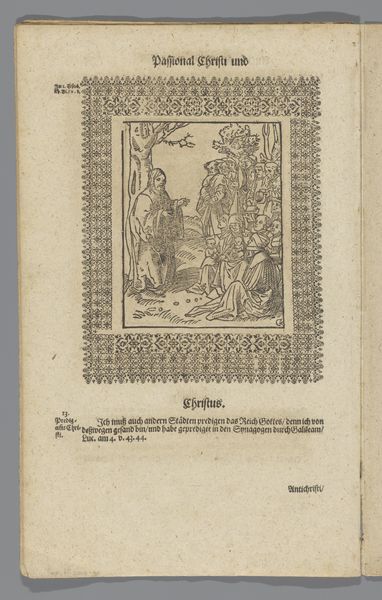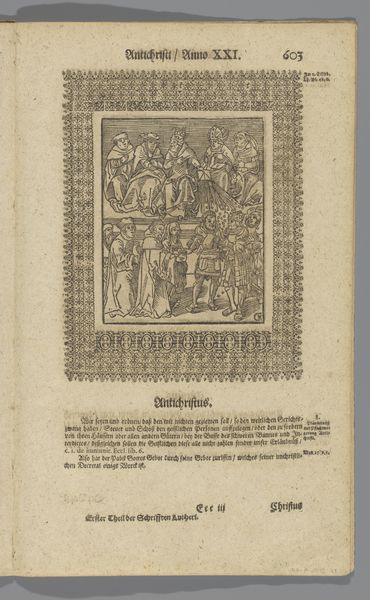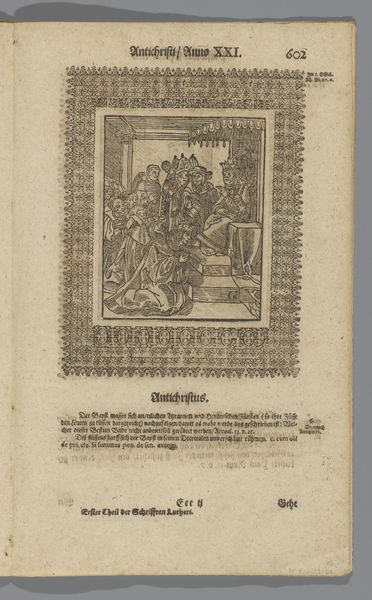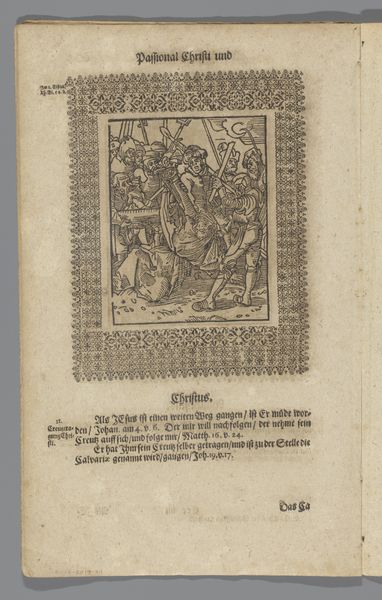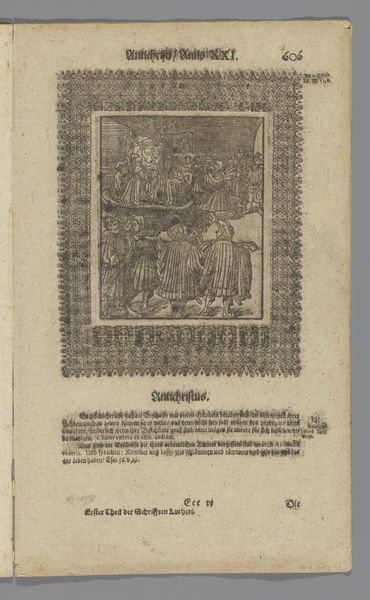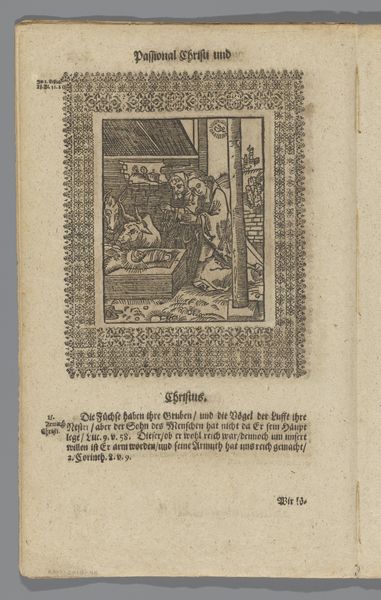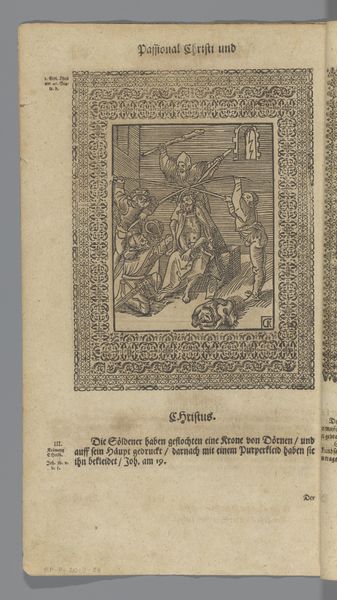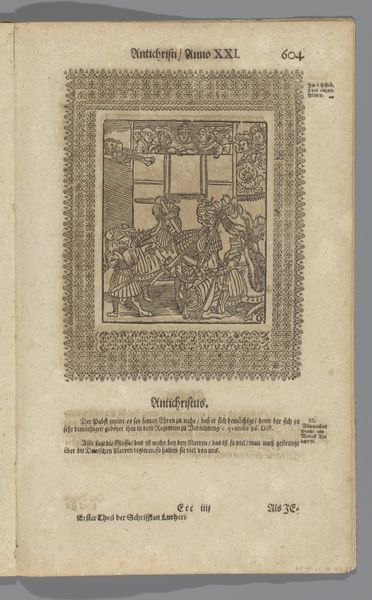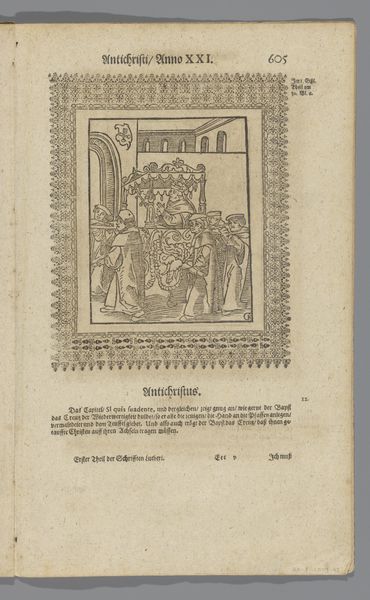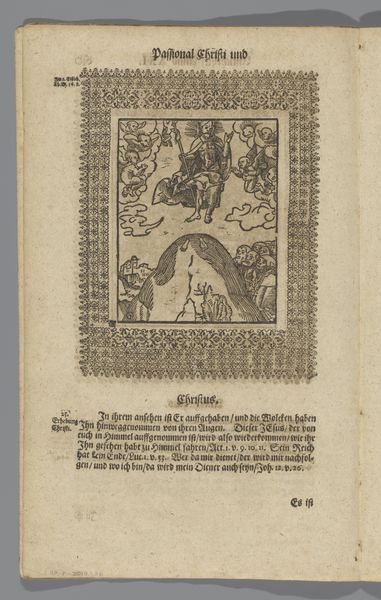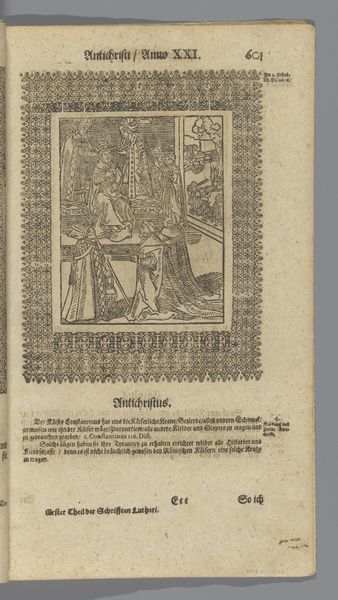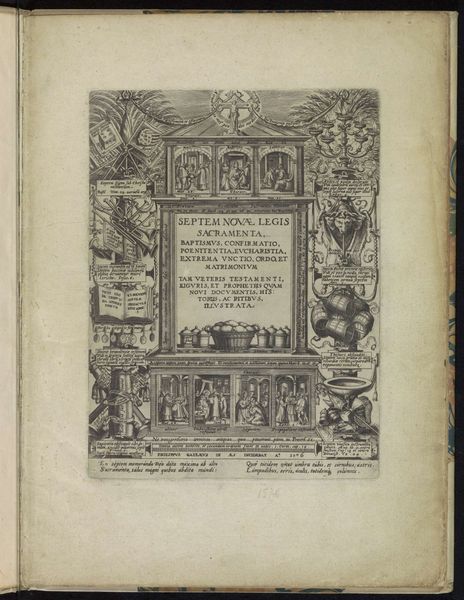
Christus onderwijst de apostelen om afstand te doen van hun rijkdom c. 1661
0:00
0:00
print, paper, engraving
#
medieval
# print
#
paper
#
history-painting
#
engraving
Dimensions: height 322 mm, width 190 mm
Copyright: Rijks Museum: Open Domain
Curator: Let's examine "Christ Teaching the Apostles to Renounce their Wealth," an engraving on paper dating from around 1661, created by the 17th-century printmaker Monogrammist GK. Editor: My first impression is one of solemnity. The composition feels incredibly compact, and the stark black-and-white engraving emphasizes the figures' heavy robes. Curator: Indeed. Considering its context, engraving involves meticulous labor, and its reproduction allows for widespread distribution of this important biblical scene focused on denouncing earthly possessions. We can analyze the economic value ascribed to printed religious material at that time. Editor: For me, it's more about the story embedded in the imagery. Christ stands at the center, his gesture teaching humility and detachment, visually reinforced by the man kneeling to relinquish what appear to be riches. The church off to the side of him becomes another symbolic message, wealth vs servitude to God. Curator: Fascinating how the Monogrammist uses simple lines to denote complex social dynamics! The varying levels of light and shade bring depth. This print must have taken considerable time to produce, highlighting the contrast with its message rejecting materialism. Editor: Notice how Christ's posture echoes representations of leadership, but his instruction challenges accepted societal structures. This could be an intentional play with familiar iconography to urge critical examination. And the fact that a kneeling man relinquishes objects near to the ground becomes critical in it's messaging as these are closer to hell, symbolically speaking. Curator: It is interesting to see an image like this produced for mass circulation in the context of an established church. Editor: Yes, the use of prevalent religious symbols communicates across cultural barriers and allows many viewers to emotionally associate with the scene and messaging presented to them. Curator: Studying the print through both the lenses of labor invested in its making and the powerful message of renunciation really demonstrates how intertwined the spiritual and material worlds were. Editor: And I feel like understanding the traditional imagery heightens my appreciation for the artist's nuanced visual argument for a different path, focused on asceticism and devotion.
Comments
No comments
Be the first to comment and join the conversation on the ultimate creative platform.
